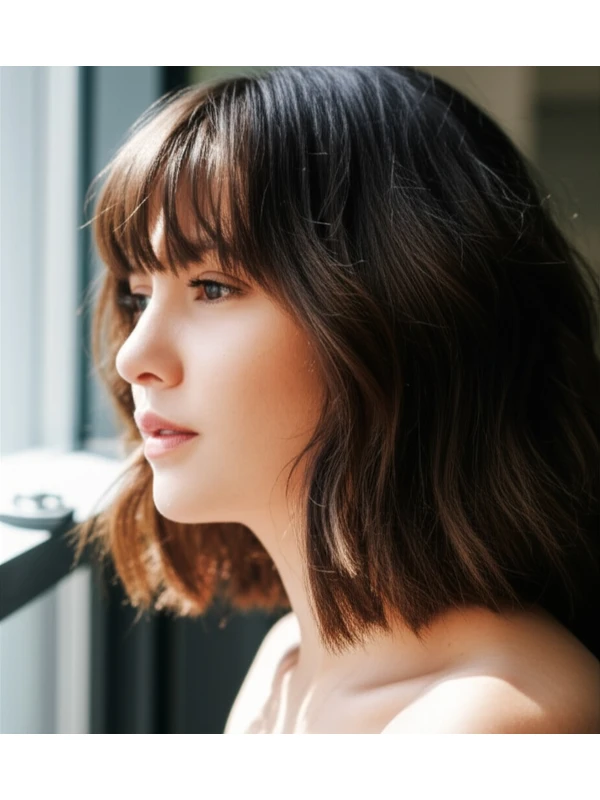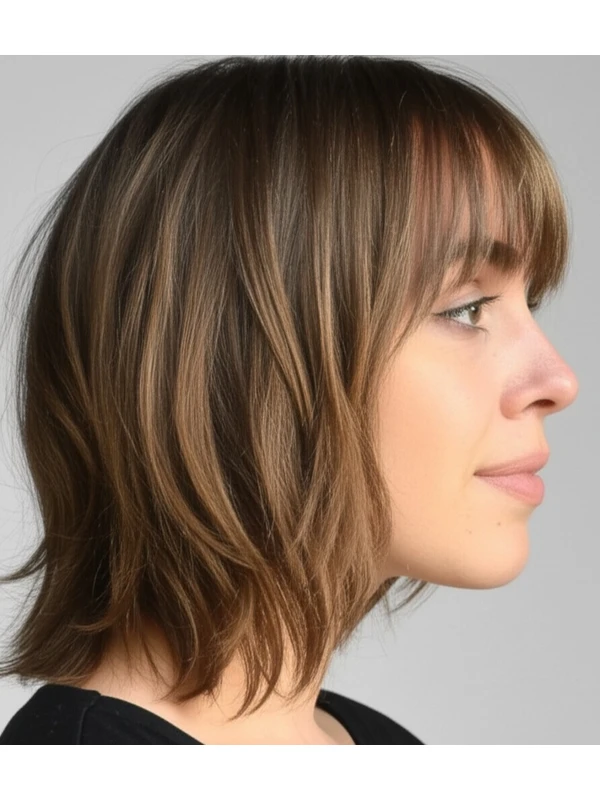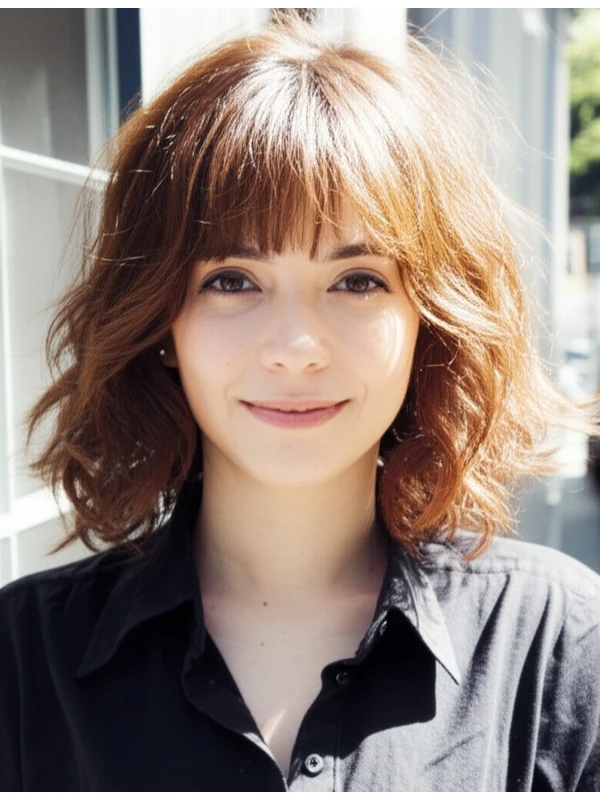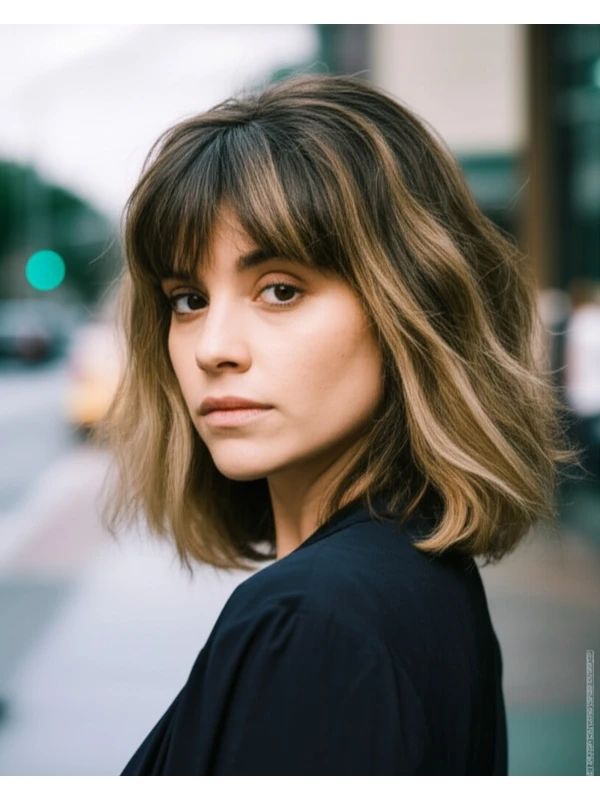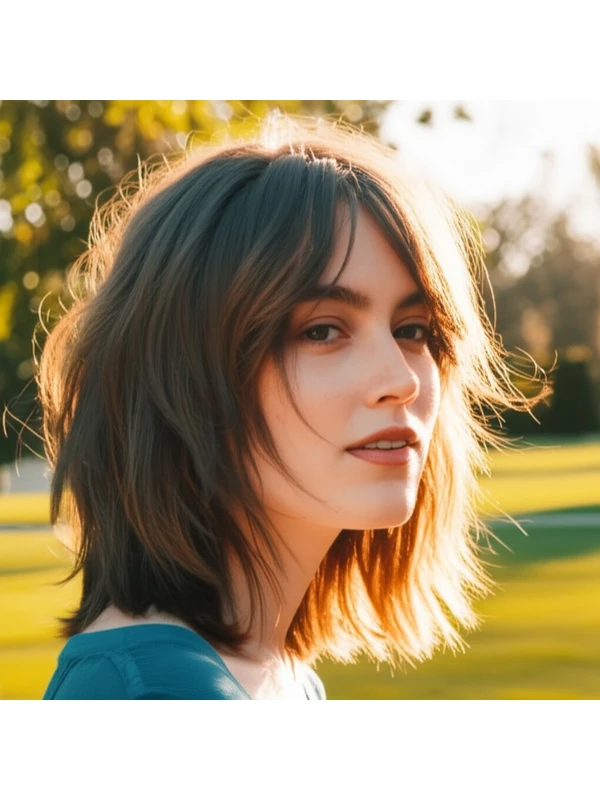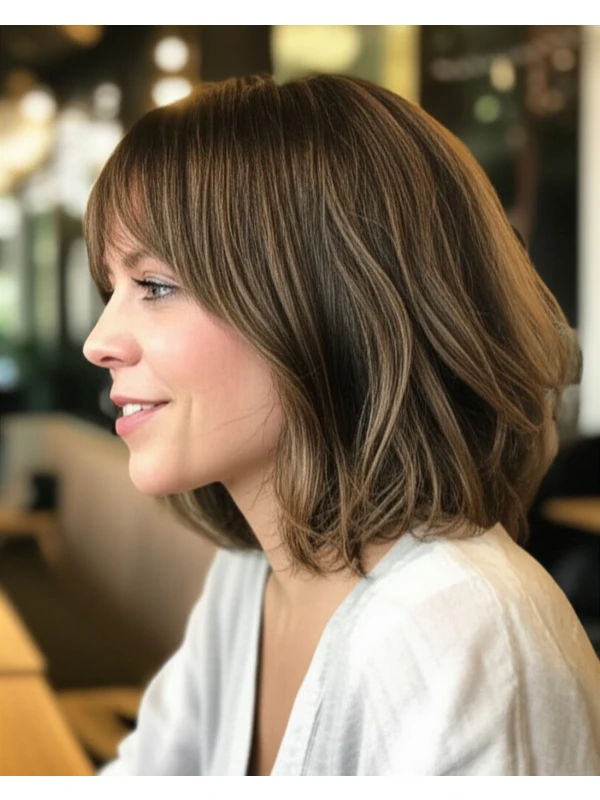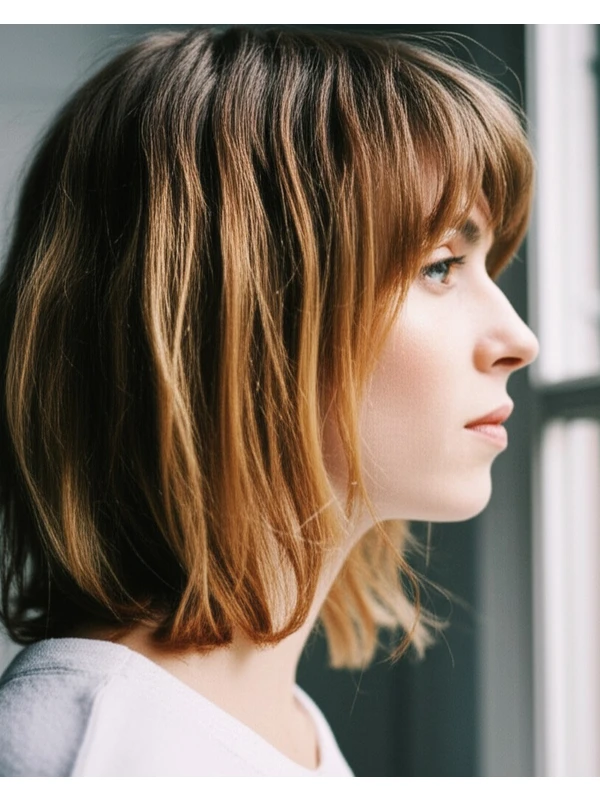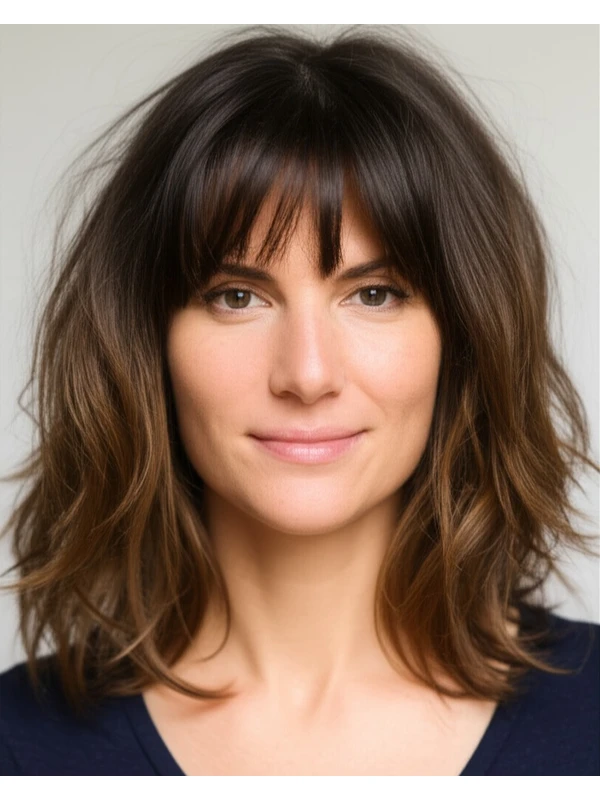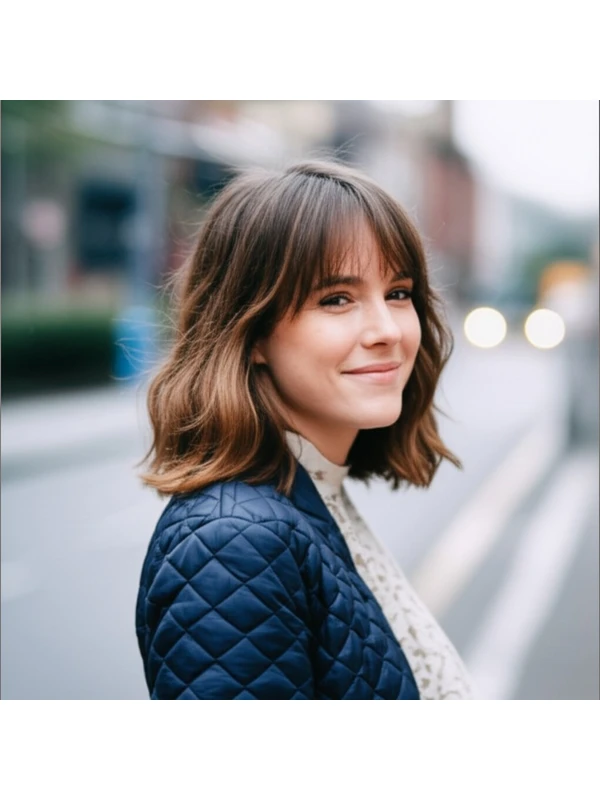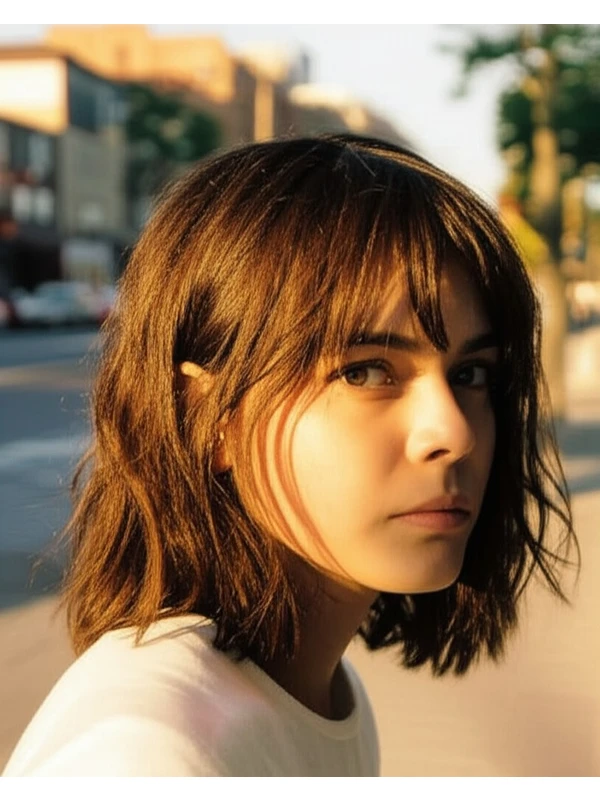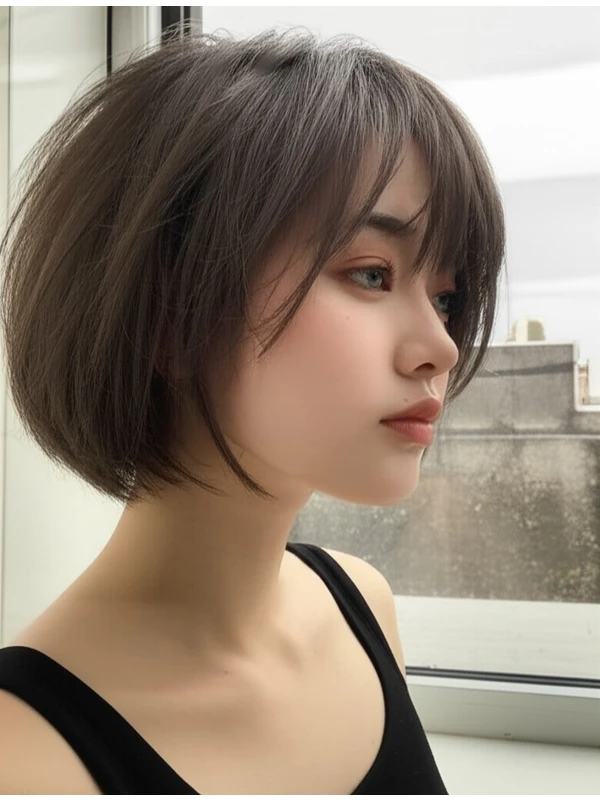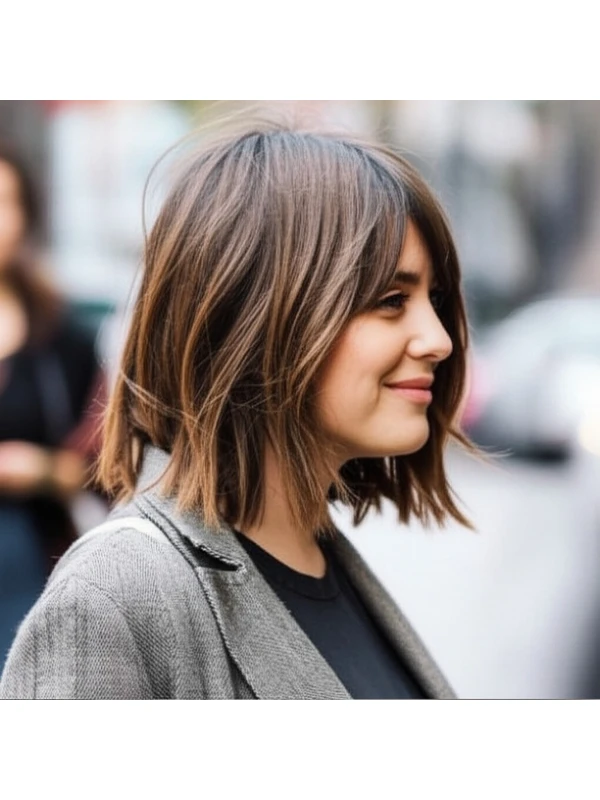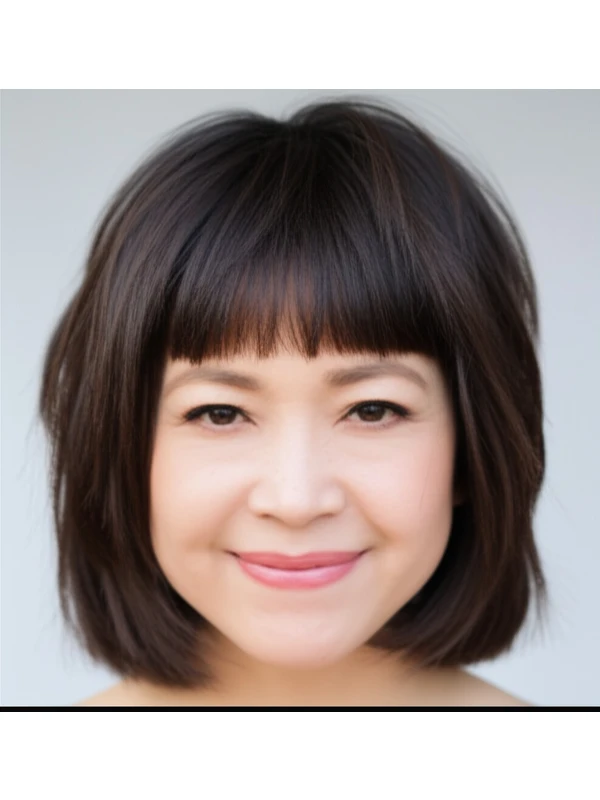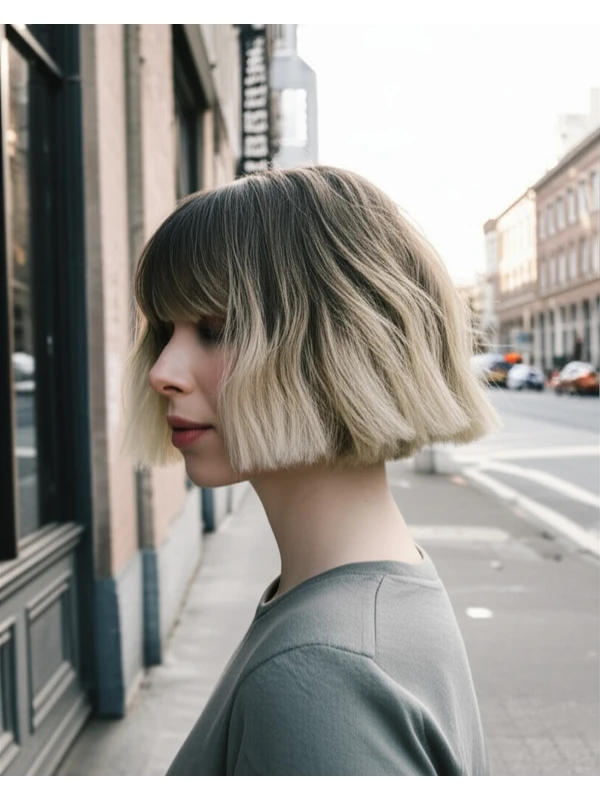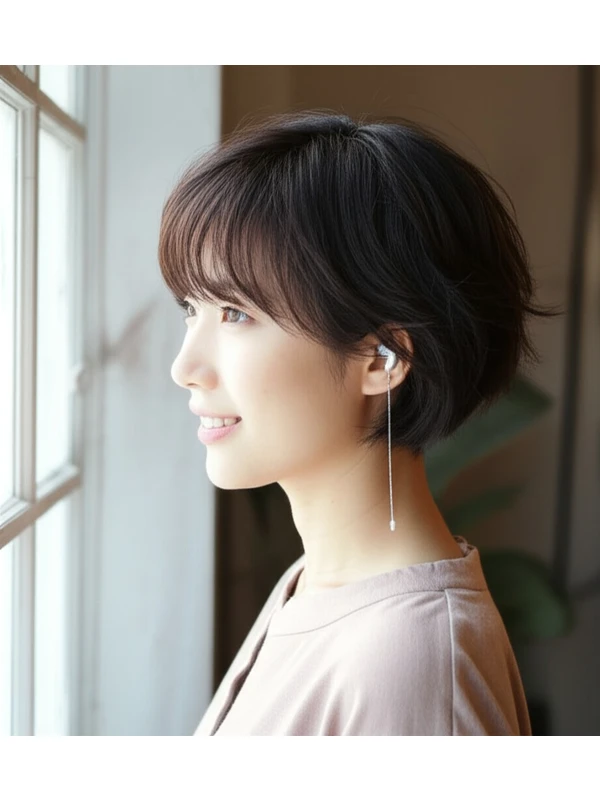#Curtain Bangs: The Effortlessly Chic Guide
Curtain bangs are having a moment, but they’re more than just a trend. They're a flattering, adaptable style that can soften features and add personality to almost any haircut. This guide breaks down everything you need to know about curtain bangs – from what they actually are to how to make them work for your unique look.
#1) Background & Definition: What Are Curtain Bangs?
Curtain bangs are a face-framing style that originates in the center of the hairline and gently sweeps outwards, resembling drawn curtains. They’re longer than blunt bangs, typically falling somewhere between the brow line and just below the chin.
- Geometry: The key is the soft, blended shape. Unlike harsh, straight-across bangs, curtain bangs are cut with a slight angle to create movement and flow.
- Key Features: Softness, face-framing, effortless vibe, versatility.
- Length Ranges: Generally 6-18 inches long (measured from hairline). The ideal length depends on your face shape and hair texture – we’ll cover that!
- Alternative Names: Face-framing bangs, soft bangs, wispy curtain bangs.
#2) Face Shape Fit: Finding Your Perfect Fringe
Curtain bangs are surprisingly versatile but work best when tailored to your face shape. Here's a breakdown:
- Oval Faces: Lucky you! Oval faces can rock almost any length of curtain bang. Longer, cheek-skimming lengths look especially elegant.
- Round Faces: Curtain bangs help elongate the face. Opt for longer bangs that fall below the chin and are styled with some height at the roots to add vertical lift. Avoid very short or blunt styles.
- Square Faces: Soften your angles! Curtain bangs create a more feminine feel by softening a strong jawline. Medium-length, gently swept bangs work well.
- Heart Faces: Curtain bangs balance a wider forehead and pointed chin. Longer lengths that blend into the rest of your hair are ideal.
- Diamond Faces: Similar to heart shapes, curtain bangs soften angles and add width. A slightly longer length that grazes the cheekbones is flattering.
- Oblong (Long) Faces: Curtain bangs can make a long face appear more balanced. Shorter lengths that hit around the chin or just below are best – avoid overly long styles as they will only elongate your face further.
Fringe Options based on Face Shape: Consider adding layers within the curtain bang itself for extra movement and texture, especially if you have thicker hair.
#3) Body Proportions & Height Guidance: Balancing Your Silhouette
Beyond just your face shape, consider your overall body proportions when deciding on curtain bang length and volume.
- Petite: Shorter to medium-length curtain bangs that don’t overwhelm the face are best. Too long can look disproportionate.
- Average Height: Most lengths work well! Experiment with different styles to find what you love.
- Tall: Longer curtain bangs (below the chin) create balance and soften a taller frame. Consider adding volume at the roots for extra lift.
- Narrow Shoulders: Curtain bangs that are slightly fuller around the eyes can visually widen shoulders.
- Broad Shoulders: Avoid overly voluminous bangs, as they can add width to your upper body. A more streamlined, blended style is best.
- Short Neck: Shorter curtain bangs (chin-length or shorter) prevent a short neck from appearing even shorter. Avoid long, heavy styles.
- Long Neck: Longer curtain bangs help fill out the space and create balance with a longer neck.
#4) Works Best With Hair Types & Densities: Tailoring to Your Texture
Curtain bangs can be adapted for all hair types, but adjustments are needed!
- Straight Hair: Curtain bangs look sleek and polished on straight hair. Styling is relatively easy – a quick blow-dry with a round brush will create the classic curve.
- Wavy Hair: Embrace the natural texture! Curtain bangs blend seamlessly with waves. Use a curl cream or mousse to enhance definition. Shrinkage needs consideration (see below).
- Curly/Coily Hair: Curtain bangs can work, but require careful planning and expert cutting. The length must be longer than you think to account for shrinkage. A skilled stylist experienced in curly cuts is essential.
- Fine Hair: Curtain bangs can make fine hair look fuller – especially if layered within the bangs themselves. Avoid overly thick or heavy styles that will weigh down your hair.
- Medium Hair: The most versatile density! Most curtain bang lengths and styling options work well.
- Thick Hair: Layering is key to prevent curtain bangs from looking too bulky. A lighter, more airy fringe is best.
Shrinkage Factor (Curls & Coils): Curly and coily hair shrinks significantly when dry. Add at least 2-3 inches of length beyond what you think you want for your bangs. Consult with a stylist who specializes in curly/coily cuts to ensure accurate measurement.
#5) Styling Variations: From Casual Cool to Evening Glam
The beauty of curtain bangs lies in their versatility!
- Sleek vs Textured: Sleek is achieved with heat styling and smoothing products. Texturized looks best with air-drying or a diffuser, enhancing natural waves/curls.
- Middle vs Side Part: A middle part creates symmetry and balance. A side part adds softness and volume.
- Fringe Variations: Thicker bangs create more drama; thinner, wispy bangs are softer and more delicate.
- Occasion Styling:
- Casual: Air-dry with a leave-in conditioner for an effortless look.
- Office: Blow-dry smooth with a round brush to frame the face professionally.
- Evening: Add texture with a texturizing spray or curl defining product and consider pinning them back partially for added drama.
#6) Maintenance: Keeping Your Bangs on Point
- Trim Cadence: Every 4-8 weeks, depending on your hair growth rate and desired length.
- At-Home Routine: Gentle brushing to avoid breakage. Avoid over-washing – focus on the roots if needed.
- Heat vs Air Dry: Minimize heat styling whenever possible to prevent damage.
- Product Checklist:
- Shampoo & Conditioner: Moisturizing formulas are best for most hair types.
- Leave-In Conditioner: Essential for hydration and detangling, especially with wavy/curly textures.
- Styler (Mousse, Cream, Serum): To achieve your desired texture and hold.
- Finishing Spray (Optional): For added shine or hold.
- Estimated Daily Styling Time: 5-15 minutes, depending on styling preference and hair type.
#7) Grow-Out Roadmap: The Evolution of Your Bangs
Curtain bangs evolve as they grow out!
- Months 1-3: The initial shape is most defined. Regular trims are crucial to maintain the curve.
- Months 3-6: Bangs start to blend into the rest of your hair. You can experiment with styling variations and let them naturally fall where they may.
- Maintenance Between Cuts: Use a dry shampoo at the roots if needed, and try pinning back sections for different looks.
#8) Color Pairings: Enhancing Your Curtain Bangs
Color can elevate curtain bangs!
- Cool Undertones (ashy blondes, cool browns): Soft, muted tones enhance the delicate nature of the style.
- Warm Undertones (golden blondes, warm browns): Create a sun-kissed look and add dimension.
- Low-Commitment Options: Highlights or balayage within the bangs can create subtle contrast without a drastic color change.
#9) Season & Occasion Guide: Adapting to the Moment
- Spring/Summer: Embrace lighter, airier styling – let your natural texture shine!
- Fall/Winter: Add warmth and dimension with richer tones and slightly more structured styling.
- Work: Sleek and polished for a professional look.
- Weddings/Parties: Experiment with textured styles or pin back sections for added drama.
- Formal Events: Consider a more sophisticated, swept-back style to complement an elegant outfit.
#10) Cost & Time: Salon Investment
- Salon Time: Typically 45 minutes - 1.5 hours.
- Price Range: Expect to pay slightly above the average haircut price – around $30-$80+, depending on your location and stylist’s expertise.
#11) Pros & Cons: Weighing Your Options
Pros:
- Flattering for most face shapes.
- Versatile styling options.
- Softens features and adds personality.
- Relatively low-maintenance (with regular trims).
Cons:
- Requires regular trims to maintain shape.
- Can be tricky to style if you’re not used to it.
- May require more product than other styles.
#12) Salon Consultation Script: Your Checklist for Success
Here are some prompts to use when discussing curtain bangs with your stylist:
- “I'm interested in getting curtain bangs – can we discuss what length would work best for my face shape?”
- "My hair is [hair type] and [density]. How will that impact the cut and styling?"
- “How much shrinkage should we account for, given my curl pattern?”
- “Can you show me examples of different curtain bang styles on someone with similar hair to mine?”
- "What products would you recommend for maintaining the shape and style at home?"
#FAQs: Your Burning Questions Answered
- Are curtain bangs difficult to style? Not necessarily! With a little practice, they can be quite easy. The key is finding the right products and techniques for your hair type.
- Can I get curtain bangs if I have very thick hair? Absolutely! But layering is essential to prevent them from looking bulky.
- What if my curtain bangs grow out too long? Pin them back, braid them, or simply let them fall naturally – they’re versatile enough to handle it!
- Can I get curtain bangs with a blunt bob? Yes, but the stylist will need to blend the bangs seamlessly into the existing shape.
- How do I prevent my curtain bangs from looking greasy? Use dry shampoo at the roots and avoid over-washing.
- Do curtain bangs look good on older women? Absolutely! They can soften features and create a youthful, refreshed appearance – just ensure the length is appropriate for your face shape and neck length.
